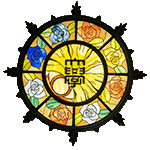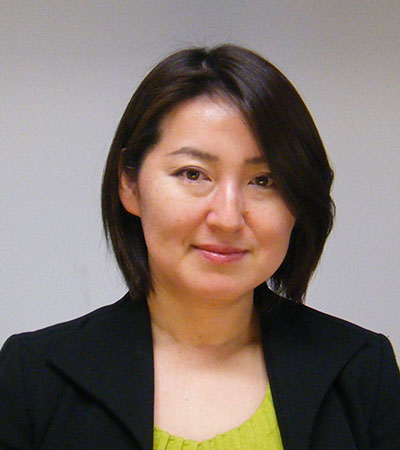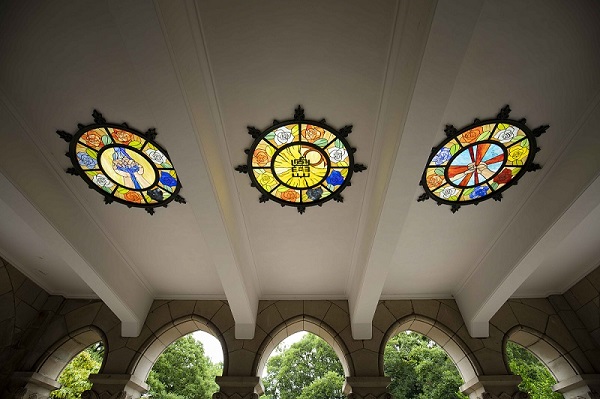Months spent on expert panels that made progress seeking a narrow path forward

Dispatches from the coronavirus crisis
We selected 10 researchers from among the University of Tokyo’s 26 constituent departments and asked them to write one-page accounts of the coronavirus pandemic from the perspective of their own field of specialization. This also presented the opportunity for them to attempt to frame their own research through the lens of the pandemic.
What were UTokyo researchers thinking and feeling in the summer of 2020? What do researchers say when they are talking about the pandemic? Some answers to these questions will be found in this series of pages.

Months spent on expert panels that made progress seeking a narrow path forward

Medical Sociology
Professor at the Institute of Medical Science
My personal specialty is medical sociology, which is literally the sociological exploration of various matters that relate to medical care. Even so, until recently, my field’s relationship with infectious disease had been limited.
However, my life took an about-turn when I was recruited in February 2020 into the government’s efforts to combat COVID-19. I became involved with a Ministry of Health, Labour and Welfare (MHLW) advisory board and the Cabinet Secretariat’s former Council of Experts. My role principally involved pointing out ethical, legal, and social issues (ELSI), proposing countermeasures, and providing liaison support in communicating with media organizations. Since the government did not keep track of people's behavior, we conducted an online survey at the end of March 2020 and received responses from 11,342 people. The results revealed rapid behavioral changes, diversification of information sources, and the lack of preparedness to become patients themselves*. The results became the cornerstone for following measures and drew attention from overseas.
With the former Council of Experts, which was convened for about four months, I felt limited without being able to ameliorate problems relating to the Council’s meaning and role, and it ended up being disbanded after about a month of prickly negotiations with the government. From July, risk assessment on the state of infections was carried out by a health ministry advisory board, followed by the reinstatement of a division of roles in which policy advice to the government was provided by a Countermeasures Subcommittee set up based on the Act on Special Measures for Pandemic Influenza and New Infectious Diseases Preparedness and Response (2012).
Measures to combat COVID-19 will fail without the well-timed and well-balanced mobilization of testing systems, active epidemiological surveys, systems of medical care provision that include home medical treatment, interventions in high-risk locales, border controls, and other initiatives. Thinking also in terms of the resumption and balancing of social and economic activities, we cannot waste a minute in seeking out and finding a narrow path forward. While this needs to be resolved within a limited amount of time through the normal workings of administrative governance systems, the risk of it being turned into a political issue is ever-present.
However, what struck me most was how, even in the midst of a crisis, these experts responded flexibly to constantly shifting challenges, voluntarily adopting roles for which they were capable, and helping each other forward without showing their raw emotions. It called to mind my experience of volunteer organizations at the time of the Great East Japan Earthquake. Experts who are drunk on their own pet theories and righteousness are of no use at all. At UTokyo, as well, I encountered people who gave me timely and sound advice after providing me with a good overview of the current situation and prospects for future development, and occasionally others who took me aside or called out to me, which was a real help to me.
For me, the time I spent in class or talking with my students was perhaps the only time that my daily life began to feel the same as it had prior to the outbreak of the pandemic. I want to thank our Dean Yuji Yamanashi of the Institute of Medical Science and all of my colleagues for their daily understanding and support. While I am struck with sadness and jealousy when I hear stories of those who applied themselves to reading or writing papers during the stay-at-home period, I hope that someday I will have the opportunity to look back on this as a kind of auto-ethnographical study.
* Muto et al. PLoS ONE 15(6): e0234292.
Stained glass windows at the Institute of Medical Science Three stained glass windows are installed in the ceiling at the former entrance of the Institute of Medical Science Hospital. Kazuo Furuya, who underwent a kidney transplant operation at the hospital in 1997, saw that the glass windows in the ceiling at the time had cracks, and came up with the idea of replacing them with stained glass. After receiving the request from Furuya, Mizuho Yamanouchi came to the hospital four to five times to get inspiration to create the stained glass works. The theme of the works, completed the following year, was “Water of Life.” The first pane represents the connection of life between parents and children, the second pane represents UTokyo and the third one symbolizes the hospital receiving flowing water (medicine). After the hospital moved to a new building in 2003, the entrance became the Institute’s service entrance, and now the stained glass windows watch over the staff members who come and go below them. |
* This article was originally printed in Tansei 41 (Japanese language only). All information in this article is as of September 2020.






